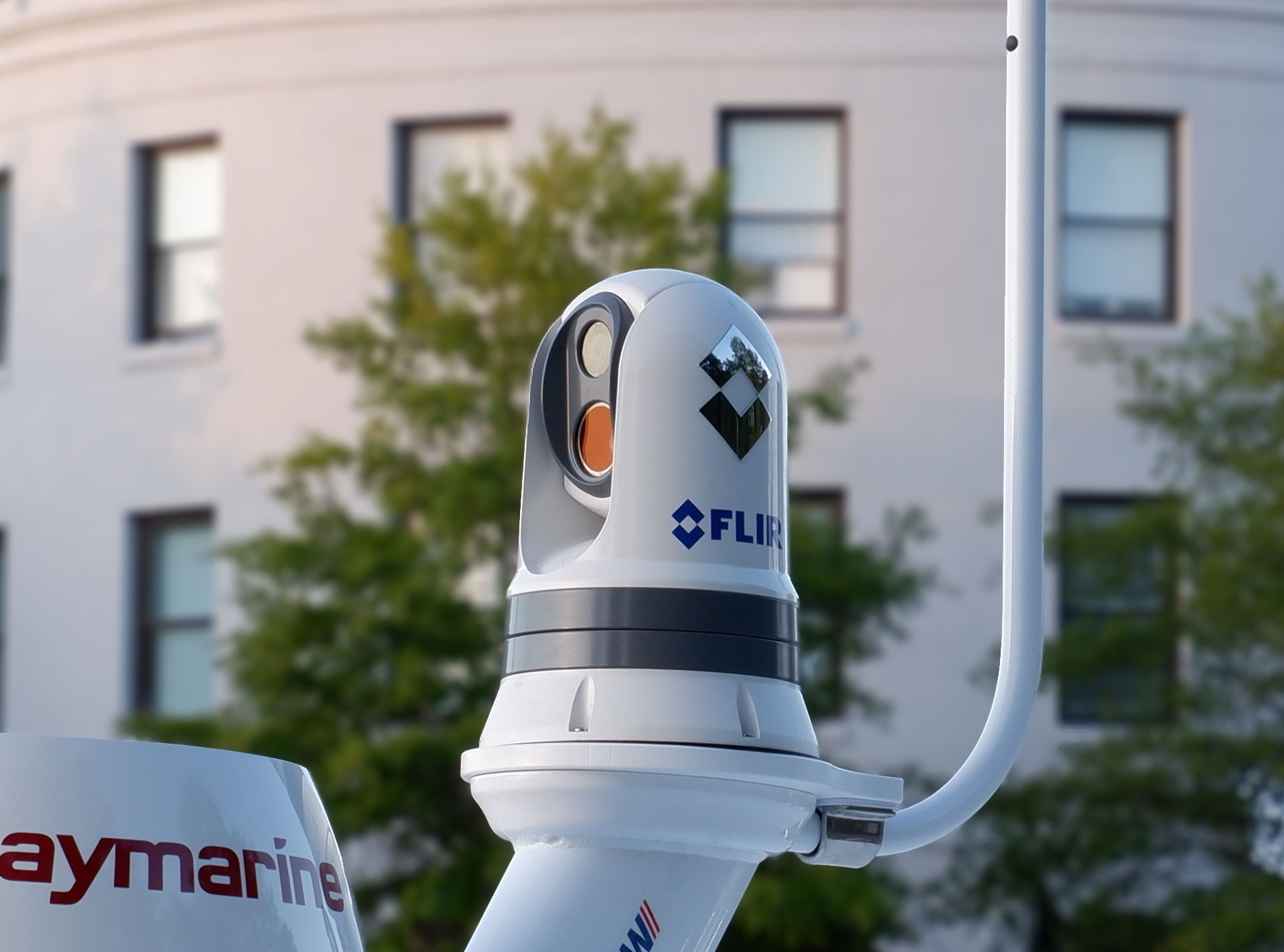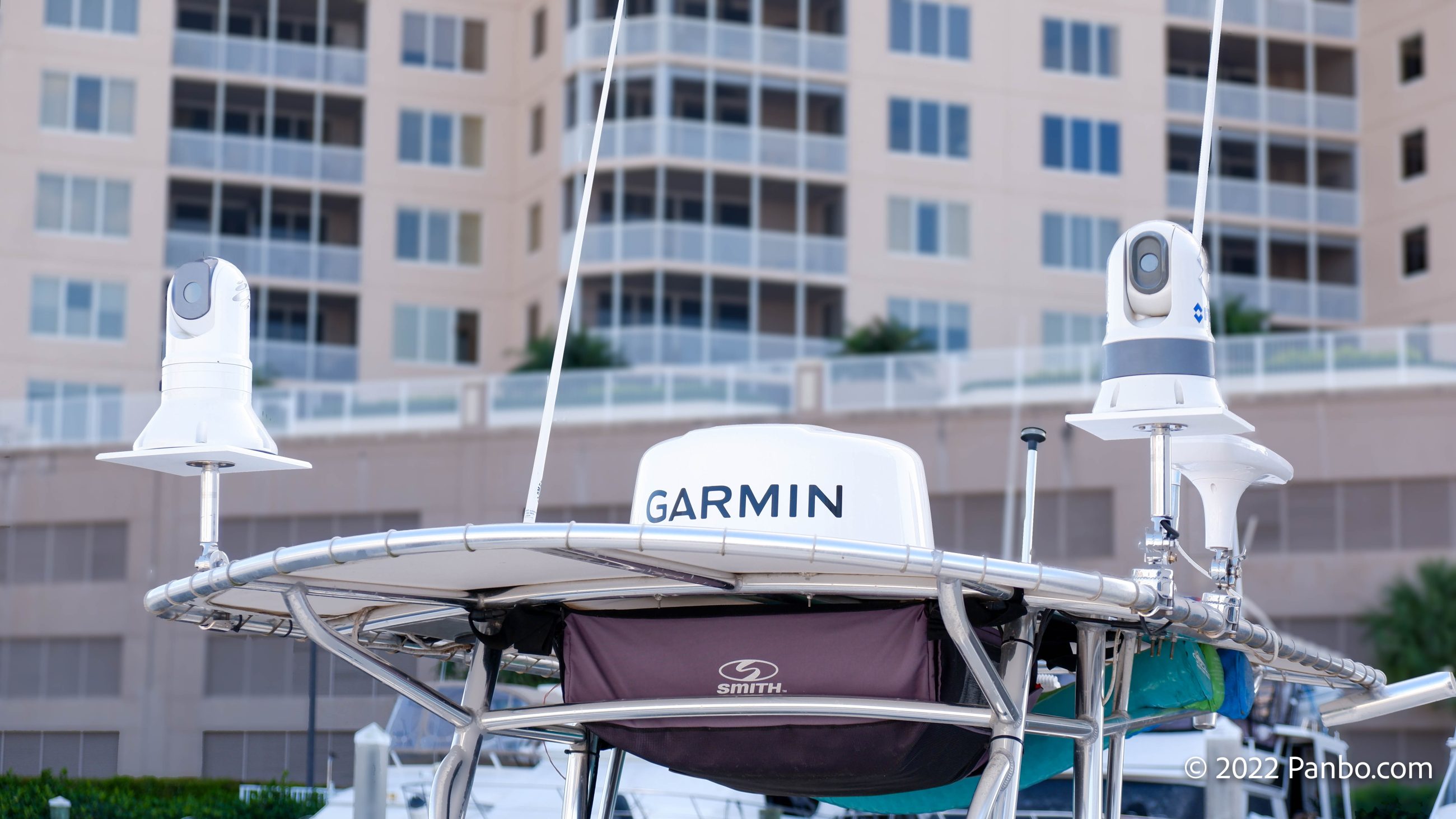OceanView’s SteadyView, camera stabilization by software
As if thermal cameras weren’t expensive enough, what you really want when the going gets rough is a gyroscopic mount so that the image doesn’t make you ill. But such mounts need fast motion sensors and involve lots of expensive and repair-prone moving parts. So OceanView has come up with an interesting technology called SteadyView which corrects for motion with a completely self-contained video processor. The best way to see the results is in this YouTube video…
According to OceanView’s CTO Kelly Hulse, “The basic concept is simple: The processor analyses the video and determines the common motion in the picture by comparing one frame to the next. Then the processor offsets the image in the opposite direction to compensate for the motion. The result is like magic; a solid clean image.” But he does allow that compared to mechanical gyro stabilization “The relative weakness of video stabilization is that the image can only be moved within the frame. In other words, it can’t shift the image farther than the size of the image itself. So, high rate turns and very violent pitching are not good applications for video stabilization.”
The SteadyView black box simply installs between the camera output and the display or video distribution system — “no calibration necessary” — and it needs just 2.5 Watts of 12 or 24 volt power. It will even pass the video signal through uncorrected if it loses power (or if you don’t want its effect). And it can be purportedly be retrofitted to many OceanView cameras, like one of the Apollo II series seen below, and I’ll bet it will work with other manufacturer’s cameras as well. The price tag is an “affordable” $2,995, and I guess that’s a reasonable adjective given the extra expense of mechanical gyro stabilization. However I did once see an amazing video of a high end gyro stabilized cam at work during an extremely rough English Channel crossing, and I wish I can find it for your viewing. But the news here is that at least part of the stabilization problem can be solved with software and silicone, and doesn’t that mean that something like SteadyView will eventually be available for even modest vessels?
















That seems rather spendy considering that my inexpensive video camera has digital stabilization. (Hmm, I wonder if it will stabilize input from an external source…?)
One could always feed the input into your onboard navigation computer (you can get a darn nice one for much less than $3K). You could then use any number of different programs to stabilize the image before display — or even the software inside of the computer that is being sold here.
I like innovation, but come on guys! The stock market bubble is a distant memory. There are not too many people who can drop $3K for this feature, and those people probably already have gyros.
Did you watch the video, Anon? I very much doubt that your camera can do stabilization like that.
This is kind of like a bunch of guys who drive Honda’s learning about the latest F1 technology. Interesting, but not really relevant.
I’m pretty sure that I’m not their target market.
I very much like the concept of video stabilization, and an extra $3K for stabilization software on top of your $20K camera purchase is probably reasonable… for a superyacht.
The good news is that video stabilization of this type isn’t very difficult and I’m sure that – like everything – the price will come down dramatically. I can easily imagine a near-future version of the Raymarine hand-held FLIR camera with this feature built-in.
Actually, if you really want this now and have some time to fiddle, video stabilization is available now – for free. Visit YouTube and search for “video stabilization”. You’ll find everything from $.99 real-time iPhone stabilization apps to video processing plug-ins to research algorithms, many of which don’t cost anything.
Granted, most boaters would rather pay a bit to have someone else figure it all out and turn it into a black box, but if you’re the tinkering type, you need not wait.
Can you recomend a setup in which one could use this in conjunction with goggles for celestial navigation app’s, that could perhaps filter out things that are not stars? Just wondering.
Is this really innovative? There are several 3rd party black boxes that stabilize video signals out there (for a lot less than $3K). Here’s one example: http://rock2000.com/products/rhp/rhp_imagestabilizer.php